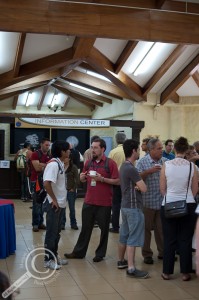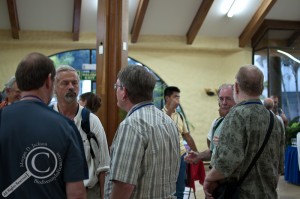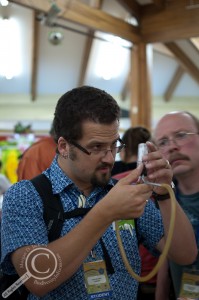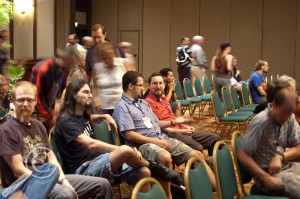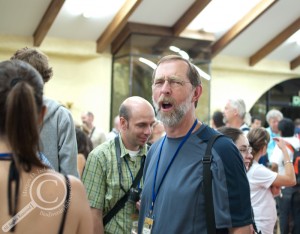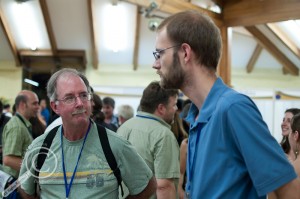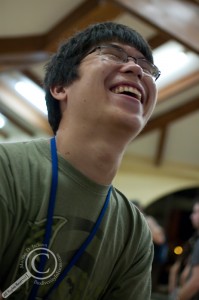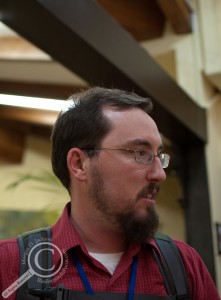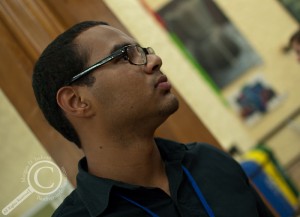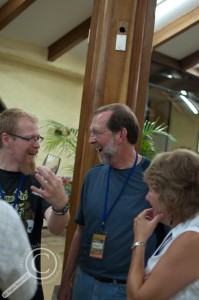Today’s the final day of the congress, and I’ll certainly miss the full days of fly talks. It’s been a much different atmosphere here than at the other entomological meetings as everyone is focused on flies. There were no periods where I was fading in and out of focus, or times where I sat outside wasting time during a few hours of IPM talks (sorry to those that work in IPM, just not my thing). This is probably why I was so drained everyday, from the constant intellectual stimulation of keeping up with all these different families of flies. Most of the methods are the same, but keeping track of the proposed relationships and how they may or may not have differed from previous hypotheses can take its toll. The sheer volume of work being discussed at this meeting was amazing, although there were some areas of the tree of life missing any taxonomic respect. Despite three full day symposia on the lower Brachycera (Syrphoidea, Tabanomorpha, Stratiomyomorpha, Empidoidea, etc) there were only a handful of talks on the systematics of the Acalyptratae, with the symposium devoted to them made up of 7 talks by 6 systematists (I gave 2 of the talks). Considering how hyper-diverse the acalyptrates are (a point made this morning by several of the higher-level systematics speakers) and the absolutely amazing morphological diversity within the (paraphyletic) group, its surprising how few people have decided to work on them. Sure they’re small, hard to see, hard to collect, and full of undescribed species that need attention, but the available niches for new students or researchers are limitless. Perhaps there are a number of acalyptrate workers who decided not to make the journey to Costa Rica this year, but of all the locations for a major international congress I’d think that a place where you can bookend your trip with a few days of collecting in some diverse habitats (as we are) would be all the impetus required to get people out of their collections and into the world. Maybe I’m still naïve.
As I mentioned, this morning was filled with talks on the higher phylogeny of flies, and was anchored by the recently “completed” FlyTree project, where molecular data was captured for almost all Diptera families (with some small exceptions of extremely rare families that are difficult or impossible to get fresh material) and morphological characters were coded for 40-odd families spanning all the major groups. The resulting phylogeny was much too complicated and the talk much to short and broad to really get a feeling for how my little area of the dipteraverse fell out, but they did propose some interesting relationships. The consortium responsible for the project is currently shopping the paper around to the bigger journals, and when it’s published, expect a full overview here. Of course, as with all taxonomic work, the end product isn’t really a solution or an answer, but another set of hypotheses awaiting testing with more species, specimens or data. Like a work in progress that will never be finished, fly taxonomy will continue to offer those interested the chance to leave their mark upon the tree of life.
The afternoon saw me sitting in on a beginner’s workshop to using the NMNH (London, UK) collaborative software Scratchpad. These online databases are intended for researchers from around the world to share information and compile their research prior to taxonomic publication. Unfortunately, it seems to me that this project is not what it was made out to be, and doesn’t seem to feature the true databasing potential that I’m looking for. Currently you are able to import a taxonomic framework for your group, either from your own catalog or database, or you can automatically import the taxonomic infrastructure of the Encyclopedia of Life. With the species names in the system, you can then go through and make species pages, attach photos, and build up an online reference database. They also claim to have a matrix editor available, but due to a series of technical difficulties (including their training server going down for most of the session) I never saw the functionality of this module. I can see the current version of Scratchpads as being useful if you want to compile a bibliography of all the papers relating to your group of study and make it available to all the people working on that group around the world, or as the beginnings of a world catalog, but beyond that I think there is a great deal of room for improvement. The project has just been given three more years of federal funding to continue building up the functionality, so I’ll continue to keep an eye on the developments being made. If nothing else, the workshop provided me with a series of notes on what I’d like to implement in my project, things that I don’t think are necessary, and ideas that need work but could be valuable in time.
The closing ceremonies were a bit of a rushed affair, but the congress Chairman Manual Zumbado made a nice speech, and it was announced that the next International Congress of Dipterology will be held in Germany in 2014. A large group photo of the participants who stuck around was taken, and if I can find a version I’ll include a link here. A brief reception with wine and hors d’oeuvres followed, and with that the participants dispersed back to their collections and universities (with a few sticking around to look for something new)!
There were some rather haggard looking students wondering around the halls this morning after a late night of partying!
We had dinner at an Italian place down the road from the conference centre, and hauled about 24 people along! The owner didn’t seem to impressed despite us half-filling his restaurant, and we had some of the slowest service I’ve ever seen. The food wasn’t great but the conversations were, and everyone’s math skills were put to the test when one massive bill came! By my reckoning the splitting wasn’t the greatest job, but it got done and was still relatively inexpensive over all.
One more night in San Jose then I’m off to Guanacaste Conservation Area for a few more days before flying home!
I’ve thrown some more photos from around the congress in here, perhaps you’ll recognize someone!
MTC…

